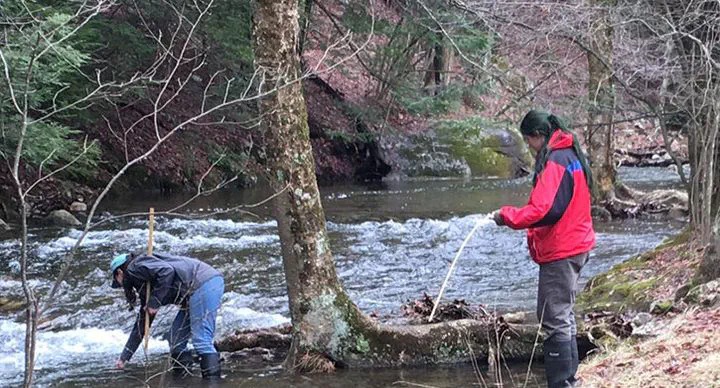Mohonk Preserve stream water quality, invasive species, and macroinvertebrate sampling from 2017-present
Mar 15, 2020·,,,,,,,·
0 min read
Mohonk Preserve and Feldsine
Natalie a and Garretson
Alexis C and Kathe
Jessica J and Long
Elizabeth C and Montoya
Anthony J and Napoli
Megan M and Wander
Heather and Citizen Science Volunteers

Abstract
The mission of the Mohonk Preserve is to protect the Shawangunk Mountains region and inspire people to care for, enjoy, and explore their natural world. Among these 8,000 acres are the vernal pools, permanent springs, tributaries, Humpo Marsh, and the Humpo Kill, and parts of the Kleine Kill and Coxing Kill watersheds within the Hudson River Drainage Basin. Not only are the areas around the Shawangunks established habitats for New York State (NYS) protected species, including an Audubon-designated Important Bird Area, but the watershed also encapsulates more than one agricultural land use area, as well as Rondout Creek, which is an important waterway for the New York City water supply. A conservation plan must be implemented in these areas in particular, keeping in line with the Mohonk Preserves goal to conserve the Shawangunk region for both humans and the greater ecosystem within it. Recognizing the immediate and long-term conservation needs of the streams in this region by employing volunteer data collection will be a catalyst to the Preserves understanding of which environmental threats of this area should be prioritized. The StreamWatch citizen science program will be the newest addition to an array of volunteer research areas, which include collection of weather data, phenology observations, monitoring of peregrine falcon breeding activities, and monitoring of fall hawk migration. Using concise stream monitoring protocol designed for volunteer safety and maximum data accuracy, StreamWatch will evaluate water quality using an array of parameters. Following thorough observation and assessment (which will include analyzing appearance and smell of the water, shape of the stream, canopy cover, nearby land uses, recent weather, and presence of riparian vegetation including invasive species) water quality will be evaluated by means of temperature, dissolved oxygen, pH, and turbidity measurements, in addition to a macroinvertebrate count. Width and depth will also be measured, being indirect contributors to stream quality. The StreamWatch protocol aims to follow a simple procedure that will yield accurate and useful data from all of these aforementioned parameters in order to confirm relevant needs for riparian buffers, changes in nearby agricultural practices (some of which directly affect portions of the watershed), protection against invasive species, and any other potential solutions to problems these watersheds may be afflicted by presently or in the future. Volunteer involvement in this stream water sampling process will encourage the concept of stewardship among visitors of the preserve, while simultaneously honing in on and pursuing various conservation goals.
Type
Publication
Environmental Data Initative